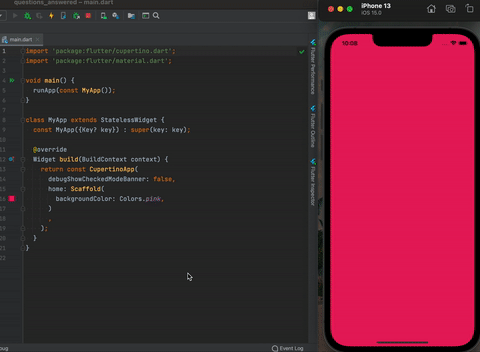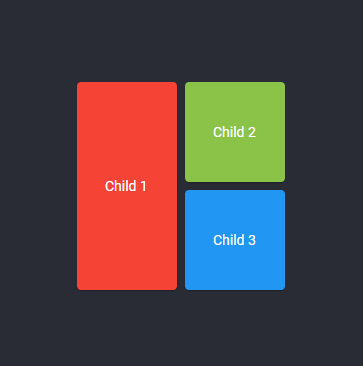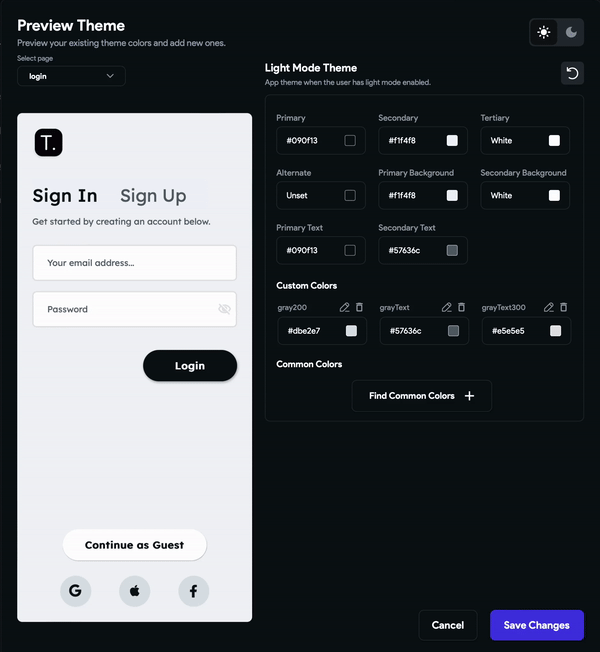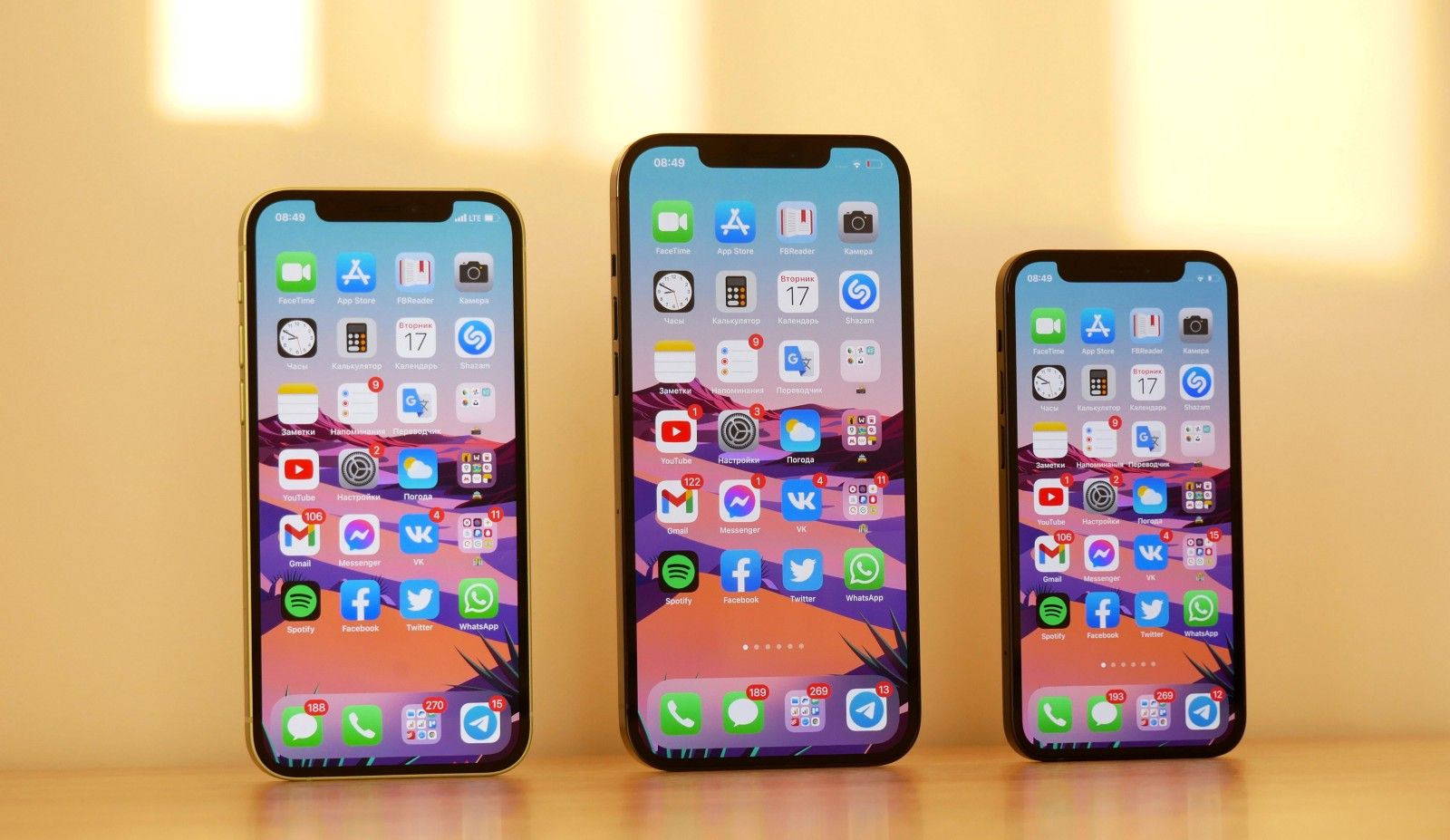Flutter is a mobile app development framework from Google that lets you build beautiful, high-performance iOS and Android applications.
In this article, let’s look at what Flutter is and how to work with it.
What is Flutter?
Flutter is an open-source mobile application development framework created by Google. It helps you create high-quality, fast, and beautiful apps for iOS, Android, and the web – all from a single codebase.
Flutter has quickly become a popular choice among developers. Thanks to its ease of use and performance, you can build beautiful mobile applications using Flutter.
Benefits of Flutter
Flutter uses Google’s Dart programming language. Dart is similar to JavaScript or TypeScript and offers a reactive programming model for building user interfaces.
This means that instead of having to update the UI when you change your code, the framework will do it for you. This makes it easier and more efficient for building dynamic and responsive UIs.

Flutter also has a fast development cycle. Flutter has a hot reload feature that helps you see the changes you make to the code immediately. With Flutter, you don’t have to wait for the code to compile every time you change a piece of code.
The core strength of Flutter is widgets.

While building an app, you usually have to write functionality from scratch. For example, if you want to embed a Google map within your code, you have to write the code to import Google Maps into your app.
But Flutter provides ready-made widgets for almost all common app functions. Think of it like working with a lego set. Flutter provides a rich set of pre-designed widgets that you can customize to create beautiful interfaces.
These widgets are not simple UI elements like buttons and text boxes. They include complex widgets like scrolling lists, navigations, sliders, and many others. These widgets help save you time and let you focus on the business logic of your application.
Here is a full list of in-built Flutter widgets that you can peruse.
Another advantage of Flutter is its performance.
Flutter’s graphics engine, Skia, draws every pixel on the screen. This makes it possible to achieve smooth, 60 frames per second animations, even on lower-end devices.
Flutter also has a large and growing community of developers who contribute to the framework. It also comes with detailed documentation and a vast library of packages and plugins. You can easily integrate those plugins into your app to add features like maps, network communication, and local storage.
Now that you know what Flutter is and why it's useful, let's look at how it compares with another popular library, React-Native.
React Native vs. Flutter

React Native and Flutter are two of the most popular cross-platform mobile app development frameworks available today. Both offer the ability to build high-performance and visually appealing mobile apps for multiple platforms.
But there are some key differences between the two frameworks that you should consider when choosing the right one for your project.
React Native is JavaScript-based and is an extension of the React library. React-native uses native components for building the UI, which provides a native look and feel for the app.
React Native has a large and established community compared to Flutter and is a great choice if your existing products use JavaScript or React.
Flutter offers a unique approach to building user interfaces by using its own set of customizable widgets. This approach gives Flutter a unique look and feel compared to other mobile development frameworks.
Flutter’s fast development cycle and hot reload feature allow developers to build applications faster than other alternatives.
React Native has an easier learning curve compared to Flutter. Since most developers know JavaScript, they don't have to learn a new language like Dart to build apps with Flutter.
But React Native’s reliance on native components makes it difficult to achieve consistent performance across multiple platforms. It can also lead to inconsistencies in the UI between iOS and Android.
Flutter offers better performance, with its graphics engine drawing every pixel on the screen. With Flutter, you can get smooth and fluid animations even on lower-end hardware. Flutter also offers a unified and consistent look and feel for the app across all platforms, as developers use the same set of widgets for building the UI.
So React Native and Flutter both have their own strengths and weaknesses, and the right choice depends on your specific needs and requirements.
React Native is a good choice for businesses with existing investments in JavaScript and React. Flutter is a better choice for projects that need high-performance, unique, and responsive UIs along with a fast development cycle.
How to Install Flutter
The best way to install Flutter is to follow the official installation page. You can choose your operating system and follow the instructions.
Once you have installed Flutter, you can use its inbuilt tool called Flutter doctor to check the components. For example, on Mac, you should see a similar response on running flutter doctor .

Hello World in Flutter
Let’s create a simple hello world app using Flutter.
We can use the flutter create <app name> to create a new app.

Now we can cd into the directory and change the main file. It will be located under <app_name>/lib/main.dart. Replace the code in the main.dart file with the following code.import 'package:flutter/material.dart':
import 'package:flutter/material.dart';
void main() {
runApp(MyApp());
}
class MyApp extends StatelessWidget {
@override
Widget build(BuildContext context) {
return MaterialApp(
title: 'Hello, World!',
home: Scaffold(
appBar: AppBar(
title: const Text('Hello, World!'),
),
body: const Center(
child: Text('Hello, World!'),
),
),
);
}
}This code defines a Flutter app that will display “Hello, World!” in the center of the screen. The main() function will call the runApp() function with an instance of the MyApp class.
In the build() method of MyApp, a MaterialApp widget with the title “Hello, World!” is created. The Scaffold widget contains an AppBar with the title “Hello, World!” and the Center widget will place the text on the center of the screen.
This is how the output will look after you run the flutter run command.

What is Flutterflow?

Before we end, I want to share a tool that has massively improved my productivity when building apps with Flutter. This isn't an endorsement – I just really like the tool and want you to know about it, too.
Flutter Flow is a visual design tool that lets you create Flutter apps using a drag-and-drop interface. You can build complex and interactive user interfaces for your Flutter apps without writing any code.
Flutterflow works by providing a visual interface for designing your app’s UI, which is then translated into Flutter code. It makes it easy to create and iterate on your app’s design, as you can see the changes you make in real-time.
Flutterflow also offers collaborative development, so you can build your apps along with a team. Flutterflow comes with a lot of integrations like Firebase, Stripe, and even OpenAI’s API.
Once you have built your app, you can publish it to the app store or play store using built-in Codemagic integration.
Conclusion
Flutter is an awesome framework for building mobile apps. It offers fast development times, beautiful and responsive designs, and a single codebase for both iOS and Android. Its hot-reload feature allows developers to see changes in real time, reducing overall development time.
Additionally, Flutter’s widget library allows for the creation of custom and complex designs with ease. In terms of performance, Flutters races far ahead of alternatives like React-Native.
Hope this article helped you to understand Flutter in detail. You can learn more about me at manishmshiva.com.

